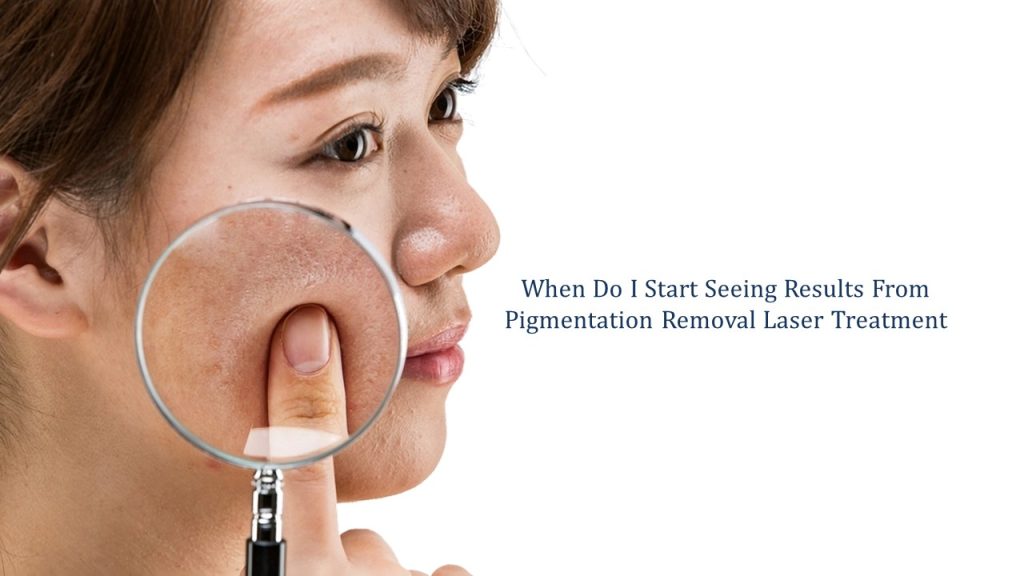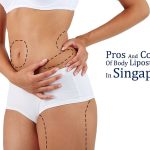Laser skin treatment is one of the most efficient and easiest ways to get rid of unwanted skin pigmentations, spots, scar marks, etc. The downtime of these non-ablative lasers is almost equal to none, and after 6 to 8 treatment sessions, pigmentation reduction will be more evident.
Despite the amazing results with minimal side effects, people are hesitant towards undergoing laser treatments. Certain misconceptions are there which keep them from having such procedures. This article answers some of these common misconceptions. It also discusses what the best way of pigmentation removal is and how various treatments work.
Common Misconceptions About Laser Treatments
There are many misconceptions present among masses regarding the laser skin treatments. The most common ones are addressed below;
#1 – It Hurts During Laser Treatment
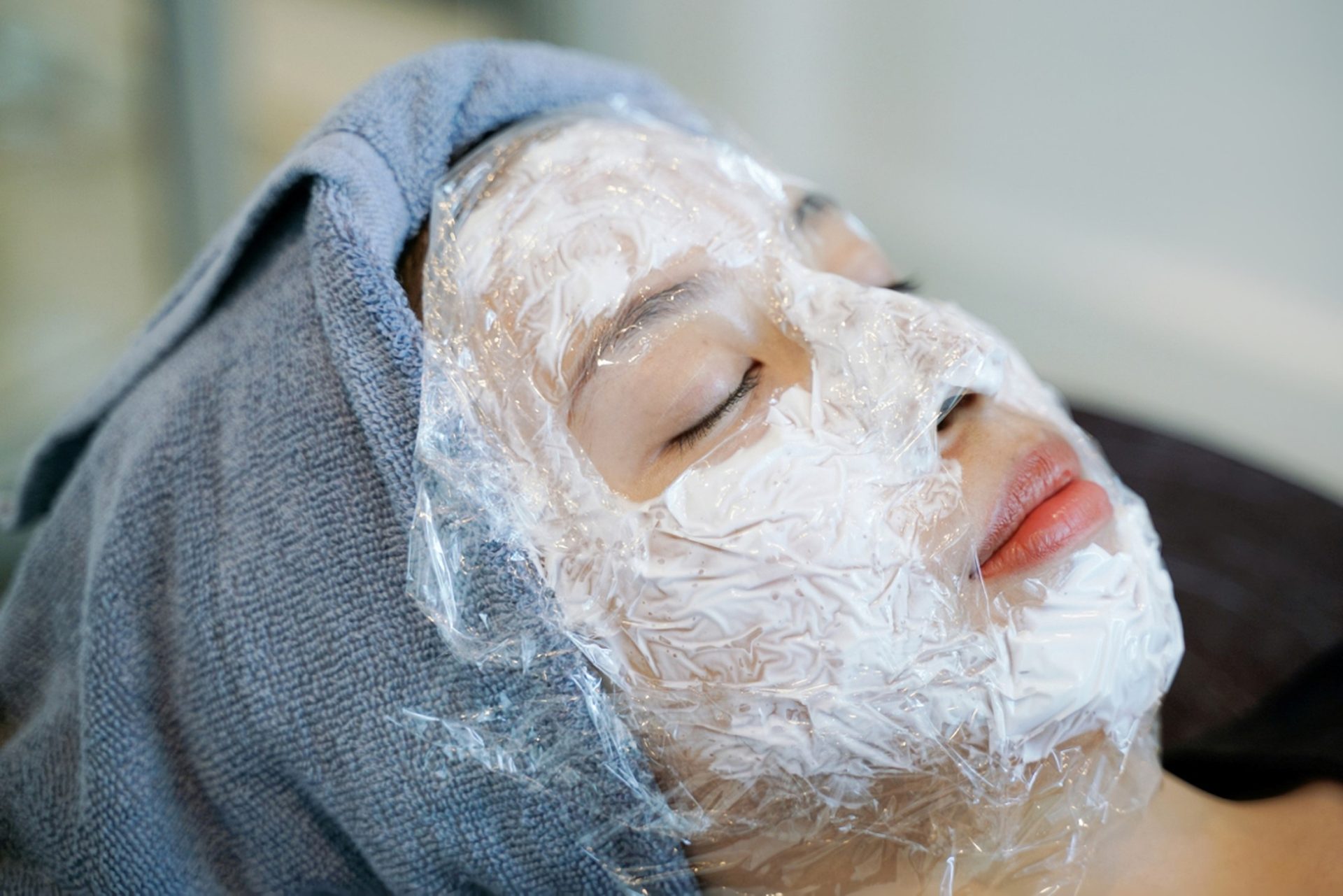
Patients often deem laser treatments as painful procedures. However, laser skin treatments are associated with very little pain that is easily bearable for most people. The feeling is usually described as a tingling sensation or if a rubber band has been gently struck against your skin.
Still, if you are anxious about the pain, your doctor can apply numbing creams on the skin before the treatment. It will further minimize the discomfort.
#2 – Each Laser Treatment Makes Your Skin Thinner And Weaker
It is a common perception that laser treatments burn the skin, and therefore, make it thin and weak. However, most of the laser skin treatments, used for pigments removal or skin rejuvenation these days, are non-ablative i.e. they do not burn off any skin layer when rightly used.
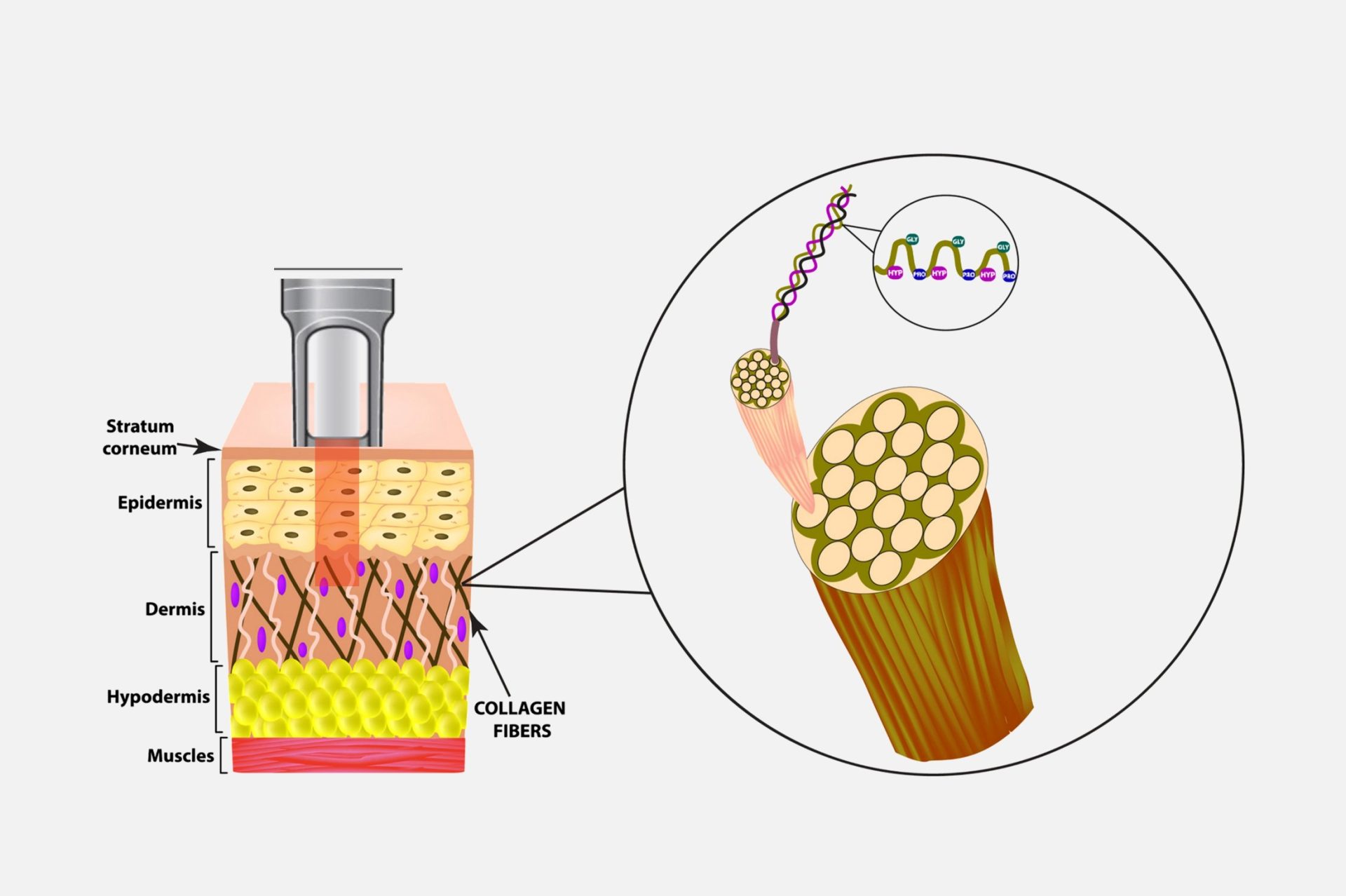
On the contrary, laser treatment stimulates collagen production in the skin. It improves skin tone and strength. Hence, it is completely safe and beneficial for the skin.
#3 – All Pigments Will Be Gone After Only One Treatment Session
Although some people notice improvements after getting one session of laser treatment, multiple sessions are required to clear away all the skin pigments. Therefore, usually, a treatment plan is required to get satisfying results. Once the treatment plan is completed, and proper care is taken after the treatment, long-lasting results will follow.
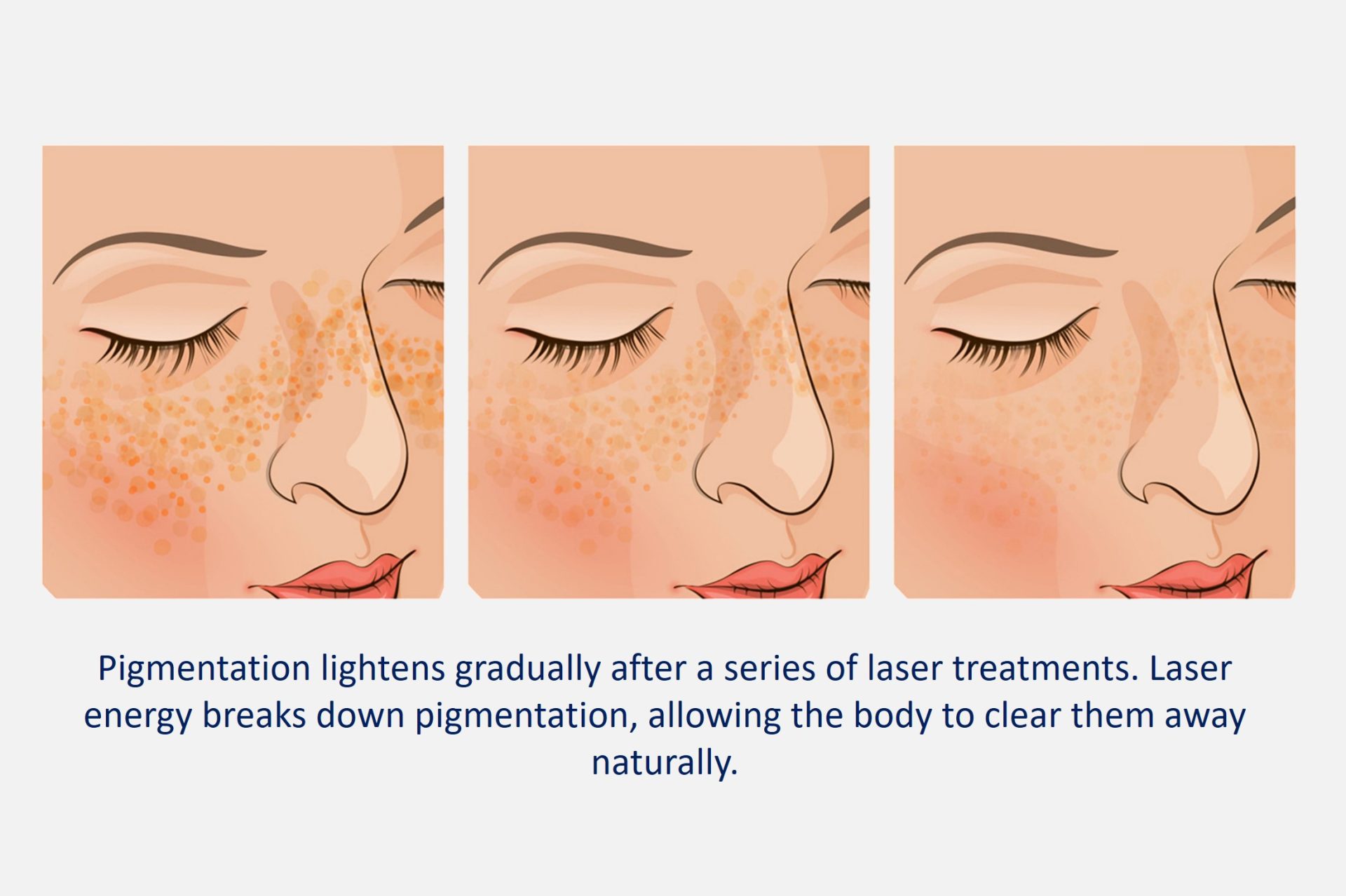
#4 – Laser Skin Treatments Have Permanent Results
The pigmented spots or lesions removed by laser treatment, usually, do not come back quickly. However, such a treatment does not prevent new spots and pigments from occurring. Several factors can induce the development of new hyperpigmentation, for example, aging phenomenon, exposure to UV rays of the sun, hormonal changes, etc. Therefore, after getting a laser skin treatment, it is still important for you to take care of your skin.
#5 – Laser Treatment Makes Skin Flawless and Baby-Like
No doubt, laser treatment address several skin problems like hyperpigmentations, scar marks, lines, wrinkles, etc, not everyone gets flawless and baby-like skin. It is because different individuals have different skin problems that may not be addressed by the same single treatment. Therefore, depending upon the person’s skin condition, a set of different skin treatments including dermal fillers, skin boosters, radio frequency, skin toning procedures, etc, is recommended to attain finer looking skin.
What Causes Pigmentation?
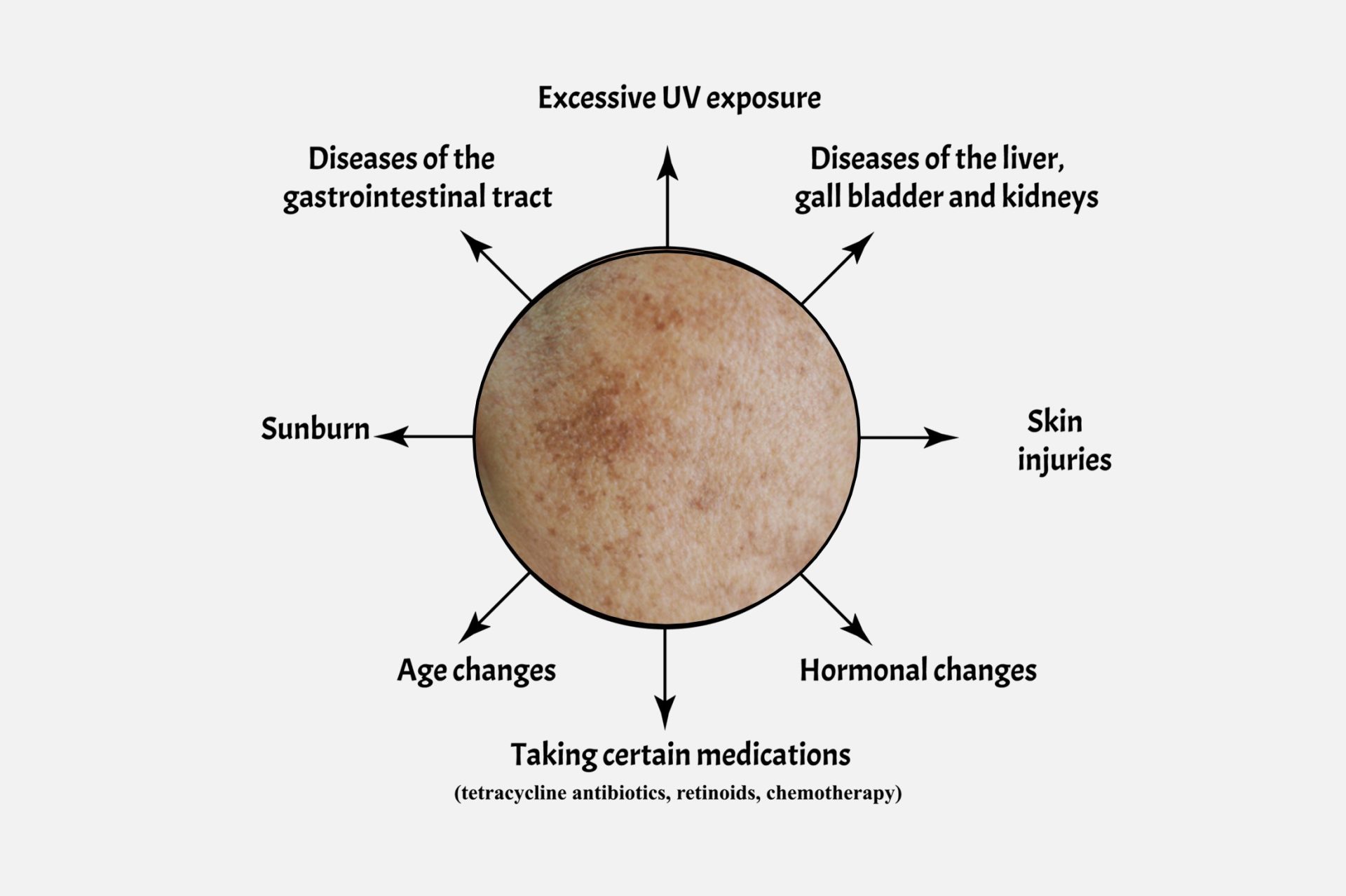
The color or pigment of our skin is rendered by the presence of melanin. The more melanin our skin contains, the darker our skin will be. Melanin is produced by cells, known as melanocytes, located between the epidermal and dermal layers of the skin. They synthesize and store melanin, and some of them transfer it to other skin cells i.e. keratinocytes.
Pigmentations develop when more amounts of melanin are produced and distributed into different layers of the skin. Several factors contribute to the development of pigmentation. These include;
- Sun exposure
- Hormonal changes (especially in women during or after pregnancy, or after menopause)
- Genetic factors
- Certain medical conditions – etc
Types Of Pigmentation Suitable For Laser Removal

The types of pigmentations, addressed by laser treatment, can be generally classified into two main categories;
Epidermal Pigmentation
These pigments are present in the first layer of skin and are usually darker, distinct with more well-defined borders/edges.
Dermal Pigmentation
They are present deep in the second layer of the skin and appear as blurry, hazy patches on the skin. As compared to the epidermal pigmentation, they are lighter in color with less demarcated borders/edges.
The type of pigment or lesion will determine which set of treatments and medications will be effective. Therefore, it is important to first identify which kind of pigmentation you have.
What Is The Best Way To Remove Pigmentation?
The best way to remove most pigments is to cure them with a combination of treatments comprising of topical creams, laser treatment, and occasionally, some oral medications. These treatments are described in detail below;
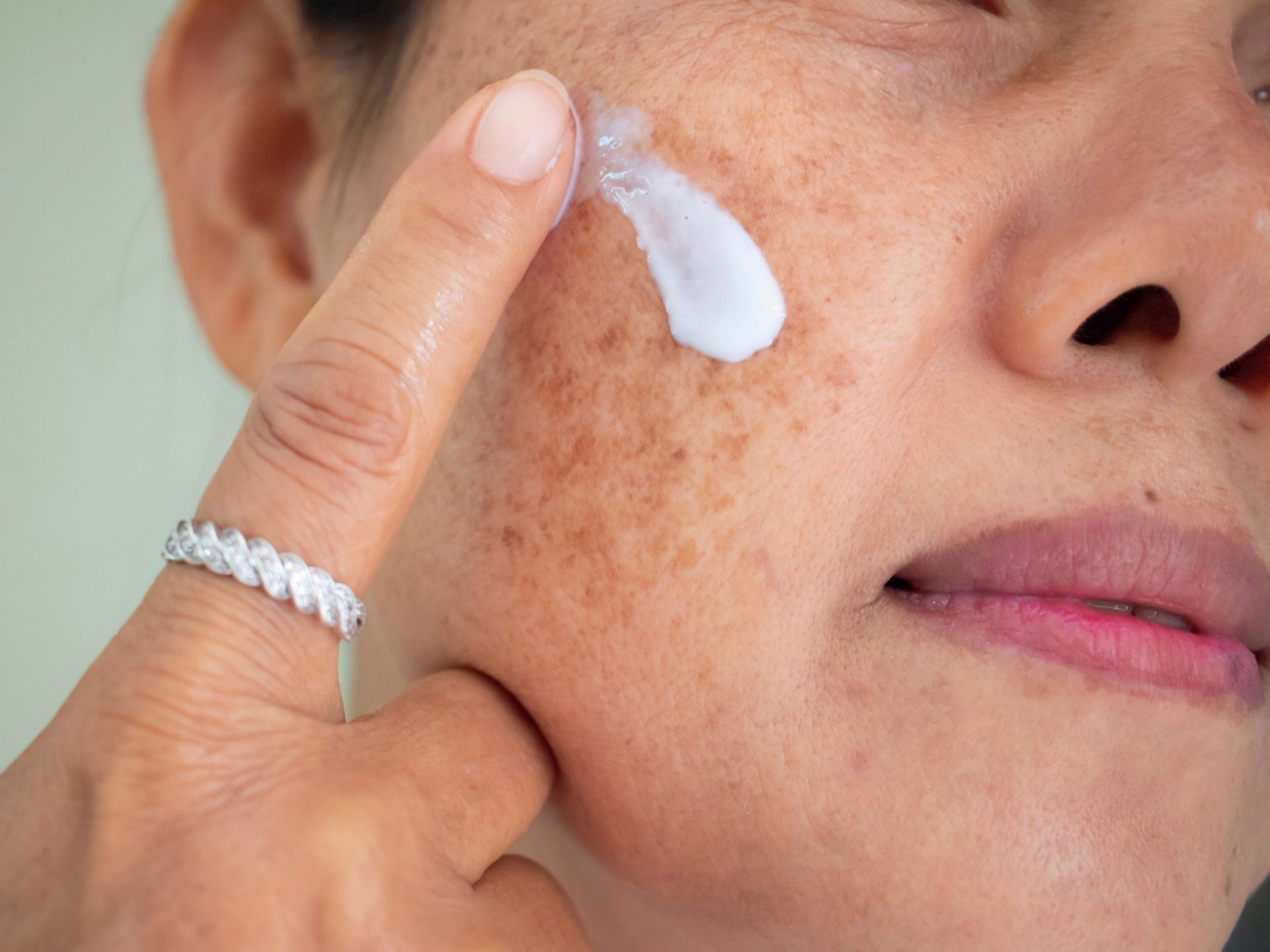
Topical Creams
Before undergoing laser treatment, it is recommended to use certain topical cream for pigmentation. These include;
Hydroquinone Cream
Using hydroquinone cream 2 to 4 weeks before laser treatment is important for certain skin conditions, particularly epidermal pigmentations, as it significantly reduces the chances of recurrence.
How Do Topical Creams Help?
Hydroquinone cream is usually a part of pigment removal treatments. It halts the production of melanin in the skin cells. Therefore, by decreasing the amount of melanin in the skin, it lightens the skin spots and pigmentations.
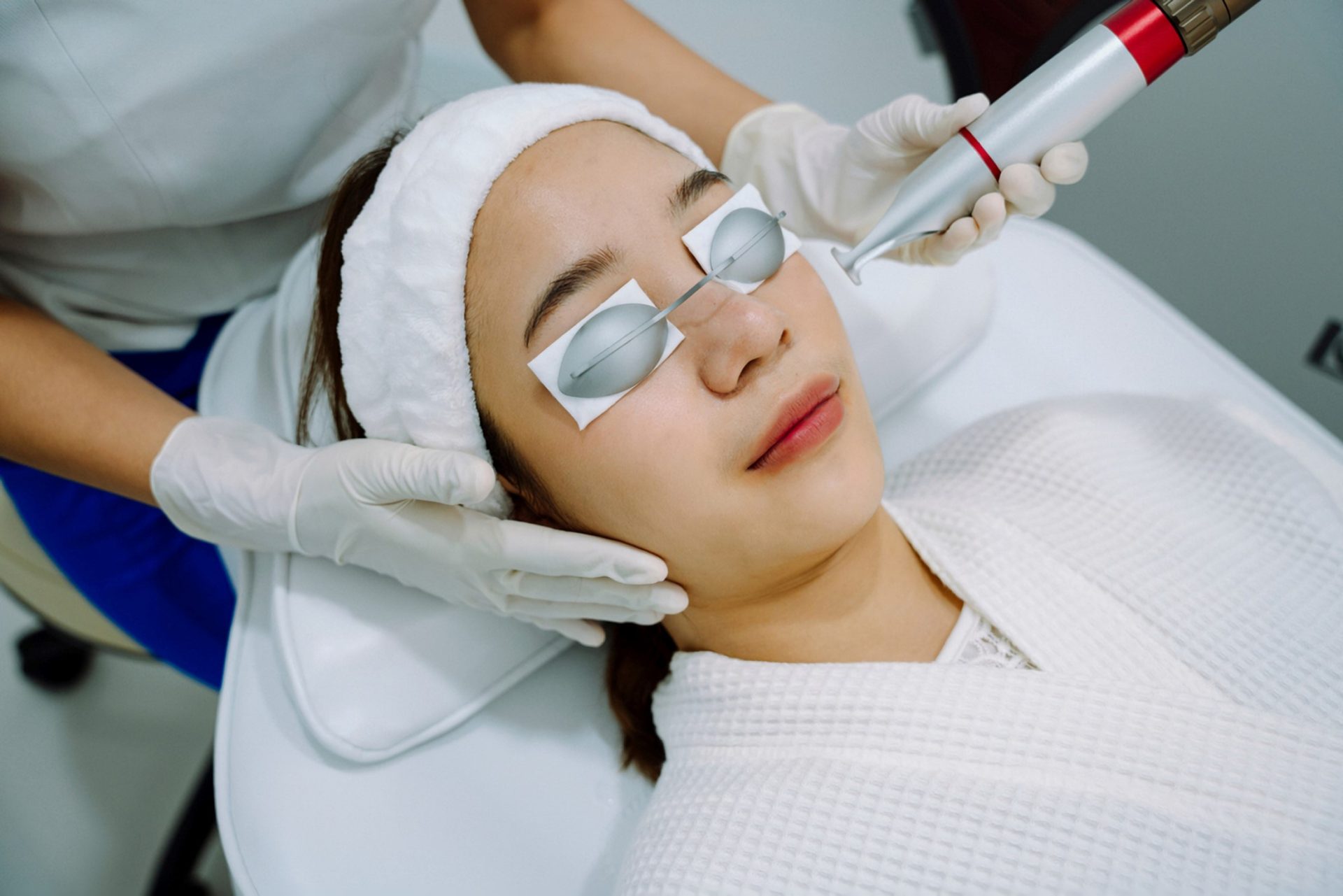
Laser Treatment
Laser is the mainstay of pigmentation removal treatment. There are different types of laser machines available. Each laser type has a certain wavelength of energy and is used to target pigmented lesions at specific depths of the skin.
Q-switched Laser
It works at the wavelength of 1064nm and targets dermal pigmentation. It is used for;
- Removing brown acne marks – It not only fades away the pigmentation but also helps in reducing the pore size and treating acne.
- As a maintenance treatment – To prevent the pigmentation from appearing again after the treatment
Pico Laser
It is the latest technology and can emit lasers of 3 different wavelengths (532nm, 694nm, and 1064nm). Moreover, as compared to other laser treatments, it has a very short picosecond pulse duration. It fires each laser beam much faster than the Q-switched laser, and its photo-acoustic energy shatters and breaks down skin pigmentations. Therefore, pico laser can remove pigmented lesions at a faster pace and more effectively.
(Note: Sometimes, there is a need to incorporate different lasers during the course of the treatment. It is required when both epidermal and dermal pigmentations are present at the same time.)
How Does Laser Treatment Work To Remove Pigmentation?
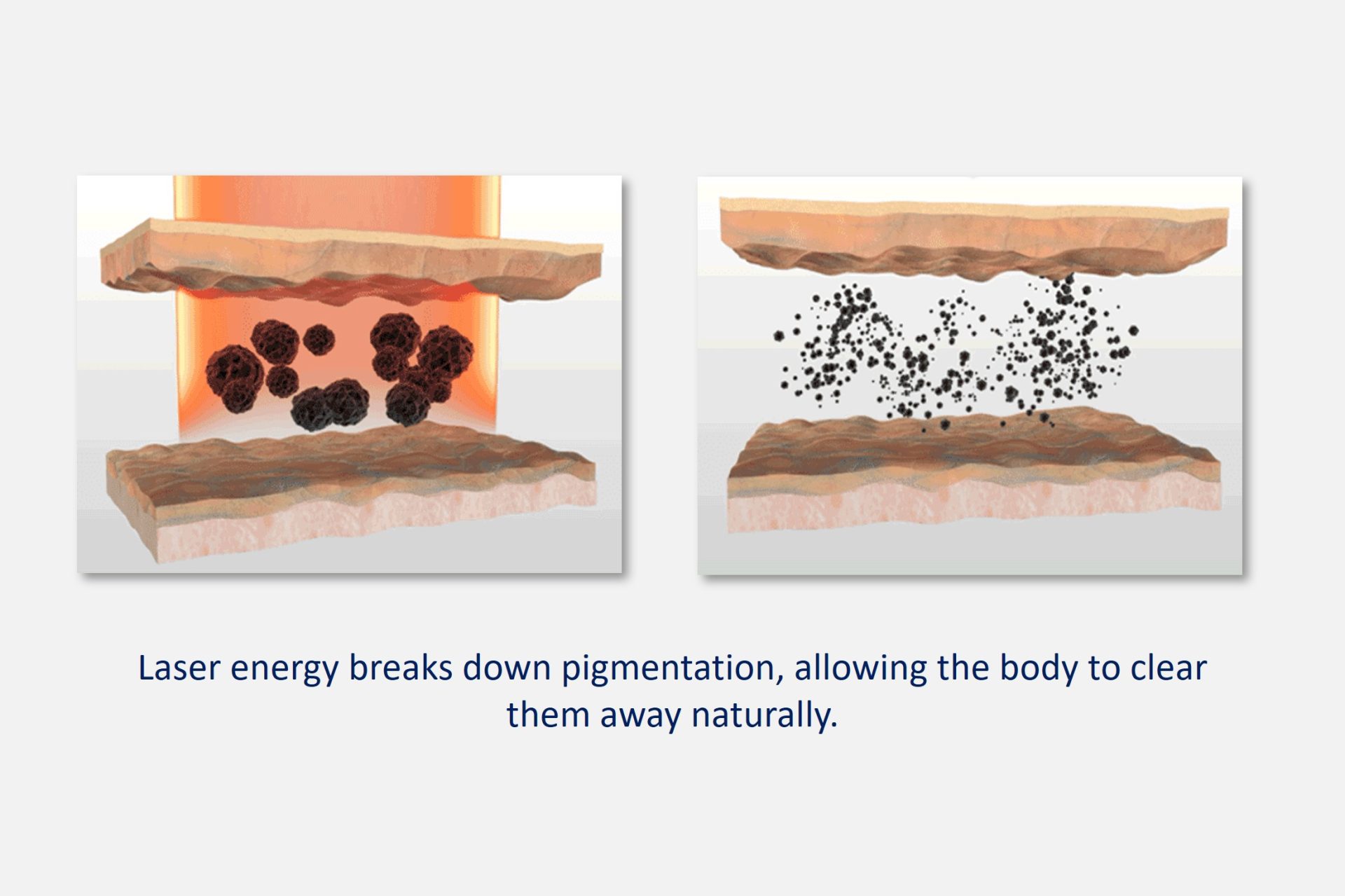
Laser pigmentation removal works by two mechanisms. The laser breaks the skin pigmentation into smaller fragments by either using photo-acoustic energy (as in pico laser) or photo-thermal energy (as in q-switched laser, etc). The small pigment particles are, in turn, scavenged by the immune cells present in the skin.
Skin Care And Oral Medication
Although the lasers used are non-ablative and do not make your skin thin, your skin is more prone to sun damage for 1 to 2 weeks after the treatment. Therefore, it is very important to take care of your skin after getting laser treatment. Use sunscreen and sun protection for this purpose.

Sometimes, doctors also prescribed oral medications like tranexamic acid for better results. The oral medication helps the skin to curb melanin production by reducing the activeness of pigment producing glands.
How Does Oral Medication Help?
Oral medications are given in some conditions to augment the effect of laser treatment. Tranexamic acid, when given orally, helps in reducing skin hypervascularity by decreasing the amount of blood flowing to the pigment-producing skin cells. It also blocks the production of melanin, and therefore, further imparts a lightening effect on the skin. In this way, oral medication helps in pigmentation removal.
Can Laser Treatments Remove 100% Of The Pigmentation Permanently?
Like discussed earlier, identifying the type of pigmentation is an integral step as it determines which laser will be most effective for pigmentation removal. When the procedure is done by an experienced doctor and a suitable type of laser is used in the right settings, most pigmentation is treated very effectively without any undesirable side effects.
Despite this, not all pigmentations can be cleared off completely. Only, the superficial ones can be 100% removed. Melasma and other dermal pigmentations; however, are only 70% to 90% reduced. Besides this, the pigmentation removal is not permanent. New pigmentations can develop over time.
Conclusion
Laser skin treatment, when rightly done, has negligible downtime with minimal risks of side effects. The best way to remove pigmentation is the combination of topical creams, laser treatment, oral medications, skincare, and prevention.
About Dream Aesthetics and Plastic Surgery
Bespoke surgical for cosmetic or medical reasons is what Dream covers to bring out the beauty in every individual. Going beyond the aesthetics and working on physical anomalies are what we value the most in leading our patients to cherish self-improvement and confident lifestyles.
Derived from Associate Professor Vincent Yeow’s long-standing experience performing plastic surgery in Singapore, our treatment plans deliver physical remodelling in our patients’ favour. One of the notable remodellings is droopy eyelid correction. The ptosis surgery used for treatment eventually fixes drooping eyelids, improves vision and enhances appearance.
Most importantly, as a trustworthy plastic surgery and aesthetic clinic, we treasure positive and natural outcomes for each individual. We will ensure to deliver the beauty refinement of your dream without compromising your safety and privacy.

